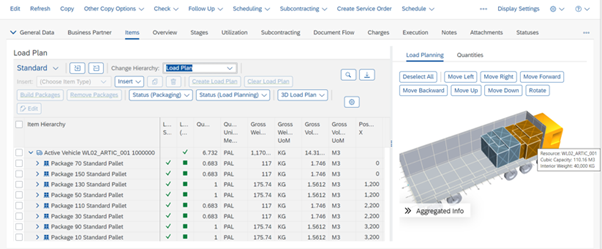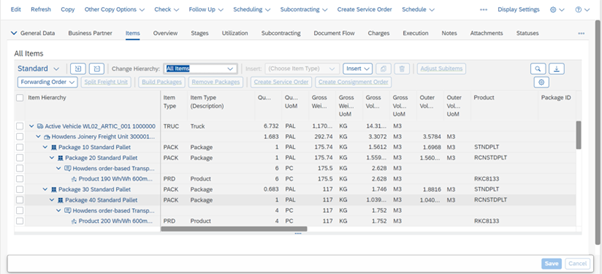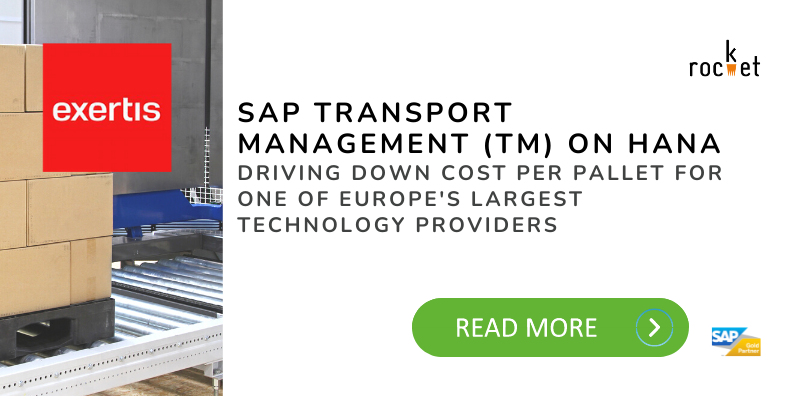Vehicle Load Planning & Optimisation with SAP Transportation Management
%20(1).webp)
SAP Transportation Management (SAP TM) is enabling efficient transportation planning across many supply chain intensive businesses. And, considering the current climate there are a variety of factors taking their toll on overall business efficiency, inflation rising cost of power and fuel just to mention a few. It is therefore increasingly important for SAP-run businesses to pursue transformational activities driving revenue and bottom-line profitability. Just consider a scenario where you have a fleet of vehicles which have been planned ready for departure and some new last-minute volume transpires. Which vehicle do you put it on, which vehicle can take it, what impact will it have on the existing schedule for the vehicle not to mention the customer performance and satisfaction…
SAP TM will help you determine options to save costs and to optimise the use of available resources. Letting you to rapidly react to transportation events and find solutions to possible deviations from the original transportation plans.
Do I really need to automate my vehicle load planning and optimisation solution?
Key to the survival of any business is the ability to make quick proactive decisions reducing cost and maximising profitability. Ability therefore to consider the weight and cubes of your deliveries across a fleet of vehicles with varying cube and weight constraints at the click of a button is instrumental in minimising not only cost but carbon impact.
Often human intervention can detrimentally impact upstream processes as focus is put on solving the more local and immediate issues. Where previously vehicles may have gone part loaded or planners may have taken hours to reformulate plans with wider impacts new volume can be optimised seamlessly and additional volume incrementally planned.
What do I need to get started?
SAP Transportation Management comes with an integrated optimisation engine allowing for the automation of not only vehicle scheduling and routing but load planning and optimisation. As with all automated solutions focus needs to be placed on master data ensuring that vehicle and product data alike is maintained appropriately however in the grand scheme of things this is a relatively small and insignificant task in comparison with the ongoing pressure of efficiently replanning fleets manually.
How does the solution work?
The solution can run as a standalone Transportation Management solution or indeed as a fully integrated solution in conjunction with Extended Warehouse Management. Central integrated programs in the background of the system allow both transportation and extended warehouse management to utilise shared master data and rulesets aligning processes alike. As orders are sent into transport management for planning the system first packages and palletises them optimising product fill into boxes or cartons before palletising. In the background the system considers if product is compatible for mixing along with any package, weight or customer specific constraints.
As products are palletised the next step is to load the pallets onto vehicles considering the vehicle type. From small vans for more local deliveries to moveable floor and beam type double deck trailers there are a plethora of different rulesets to quickly consider including vehicle location, proximity to delivery, driver hours, space available, cube, weight etc...
Simplifying the process what is the volume and weight capability of the vehicle, what is the size and weight of the product and packaging, how do the two best fit together when considering vehicle availability, routing, driver hours and customer delivery timings just to mention a few…

As orders are transferred to TM they are optimised automatically through an engine which quickly considers the options before casting a final plan. As new volume transpires it can either be incrementally planned onto existing vehicle fleet with some volume already loaded or conversely planned onto an empty vehicle. Product is positioned onto vehicles considering axle weight limitations, heights also product stacking constraints:
Vehicle schedulingo Specific timings the vehicle needs to adhere to
Vehicle Routing
o How can the vehicle be optimally routed considering its size and weight also any traffic or weather related conditions
Time constraints
o What are the specific time constraints we are working to (Customer delivery windows, driving time limits)
Vehicle cube and weight
o What capacities do we have available to us considering products already loaded
Product and packaging constraints
o What are the specific product and packaging constraints for the customer
Load optimisation takes into consideration not only the package and load building constraints but also specific customer constraints:
Process products by layer
o Rules can be set with reference to the mixing of layers/packages
Pay consideration to product height
o Multiple product profiles can be maintained to accommodate part pallet scenarios
Ensure weight and cube are at optimum levels for resources deployed
o Where vehicle capacity is insufficient extra vehicles are automatically planned
Specific rules are pre-set within master data standardising the process for each and every load created:
Vehicle Sizes/Availability
Booking time windows
Incompatibilities – Fleet/Customers
Loading constraints – Cube / Axle Weights
Carrier Ranking/Delivery performance
Package Building hierarchy covers the following items linking into customer packaging specifications:
Product
Package
Pallet
We can see in the below example products being packaged into boxes and then palletised

What is considered within the optimised plan?
- Multiple resources accommodated
- Containers, Rigid/Articulated vehicles, Single deck/double deck/beam type double deck
- Height, Width, Length and Weight capacity restrictions
- Internal/External dimensions, Tare Weight/Gross Weight, Axle Weight
- A plethora of standard rulesets for load optimisation
- Loading pattern/order, stacking height, density
- Ability to configure more specific and bespoke rulesets
- Flexibility to optimise loads from within specific documents or the main transport cockpit
- Real Time 3D Visualisation of loading
- Products loaded/Not loaded, Colour coded products by destination also capacity limits-
- Integration to wider SAP components
- Extended Warehouse Management
- Load plans downloadable to Excel
